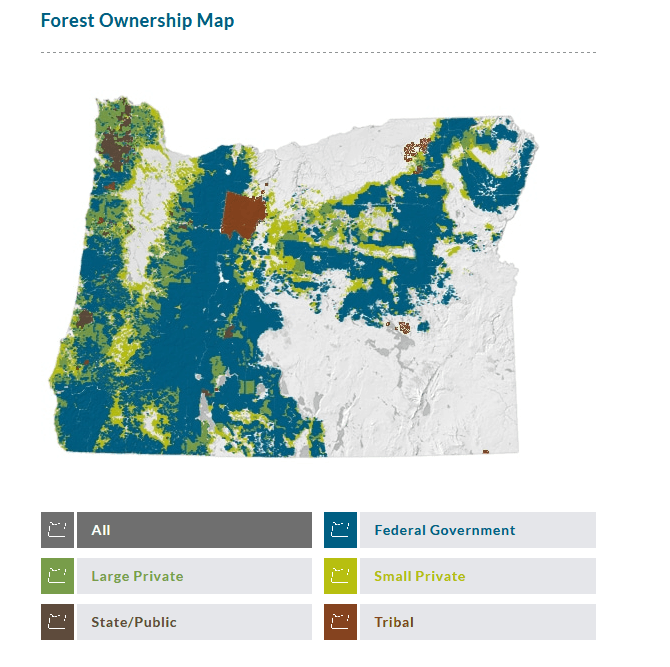
It’s always interesting to compare how California, Oregon and Washington deal with forest issues. A new process in Oregon deals with developing a Habitat Conservation Plan for private forests by bringing all parties into a collaborative discussion with mediation, and then ultimately passing a bill in the State Legislature. It’s also interesting that as reported “by signing off on the memorandum, the parties agreed to stand down from pursuing legal challenges to the issues while the negotiation process is still ongoing.” But I guess that both sides have the opportunity to litigate afterwards? It will be interesting to watch how all this plays out.
Here’s one version of the story from the Well News, which is an interesting news outlet in its own right.
— Oregon Gov. Kate Brown announced the first of a series of negotiations Wednesday in a collaborative effort between conservation leaders, fishing organizations and forestry representatives to adapt statewide forest practices.
Brown brokered an agreement between the conservation groups and timber products entities in February 2020 to forgo a divisive ballot initiative battle in favor of “collaboratively developed changes to forest practices,” instituted through legislative efforts, according to a release from the governor’s office. These efforts are aimed at creating new protections for sensitive aquatic species on over 10 million acres of private forestland in Oregon without impairing the state’s timber industry.
“In the past year––despite the disruptions of a global pandemic and historic wildfire devastation which made face-to-face meetings very difficult––this group has made steady progress in establishing common ground,” Brown said in a written statement. “Together, we can build a future for Oregon with healthy forests, fish, and wildlife and economic growth for our forest industry and rural communities at the same time.”
The negotiations between the stakeholders could be finalized in a statewide “Habitat Conservation Plan” from federal agencies for threatened and endangered species. State lawmakers hope the cooperatively developed plan will lead to long-term conservation benefits for the state’s wildlife while establishing greater regulatory certainty for landowners.
The state’s strategy for addressing the concerns and priorities of the involved parties was outlined in a memorandum which was mediated and released by the governor’s office. In the memorandum, the parties agreed they have incentive to reach a compromise on the “historically difficult issues” and that “any compromise must be built on mutual trust and respect.”
“Oregon’s forests are a precious resource that provide extraordinary beauty and recreational opportunities and a source of good, year-round employment and economic opportunity for small, family-owned businesses,” Heath Curtiss of Hampton Lumber said in a written statement. “Our goal is to ensure a vibrant and sustainable Oregon forest products industry, now and into the future, while avoiding the tragic community losses we saw in rural Oregon when federal forest harvest plummeted.”
Curtiss continued, “It will be delicate work, but if we focus on good science, specific problem statements, and the least burdensome measures to help remedy those problems, we’ll get there. It will require compromise on all sides, and a recognition that forestry is only one piece of the puzzle.”
Consequently, the parties hope to come to an agreement that ensures greater business certainty for forest landowners and industries and greater environmental certainty for the protection of threatened and endangered species and “aquatic resources,” according to the memorandum.
Simply put, the conservation entities want advanced protections for drinking water and wildlife and the business entities do not want these changes to compromise the state’s manufacturing infrastructure.
Further, the memorandum outlines a new process for resolving subsequent conflicts. By signing off on the memorandum, the parties agreed to stand down from pursuing legal challenges to the issues while the negotiation process is still ongoing.
I suspect your “guess” about litigation afterwards will be accurate. My faith in opposing sides walking away from their day in court has weakened with time. It reminds me of something a district ranger told me once: if they (whoever “they” is) are fighting, they believe they are winning.
“The negotiations between the stakeholders could be finalized in a statewide “Habitat Conservation Plan” from federal agencies for threatened and endangered species.”
Credit the Endangered Species Act with providing the incentives for private landowners to negotiate their compliance with requirements to minimize incidental take of listed species, and with requiring the use of best available science to determine how much take will occur and how that will affect the survival and recovery of the species.
It doesn’t seem there is whole lot of room left for compromise. I think the majority of the private timberlands have been converted to Douglas fir plantations while the environmentalists where busy litigating federal lands. About the only place I can see compromise coming is by increasing harvest of public lands which could be accomplished “ecologically” and I think should happen. But how are you going to convince timber investment companies to invest in the long term and species diversity? About the only “compromise” that could take place on private timberlands seems like it would be an increase in restrictions. I don’t see that happening.
Or letting them log more “owl habitat” in exchange for?
Maybe this has been posted elsewhere, but here is where the negotiations led and what has been presented to the Oregon legislature.
https://www.oregon.gov/odf/aboutodf/documents/2022-odf-private-forest-accord-report.pdf